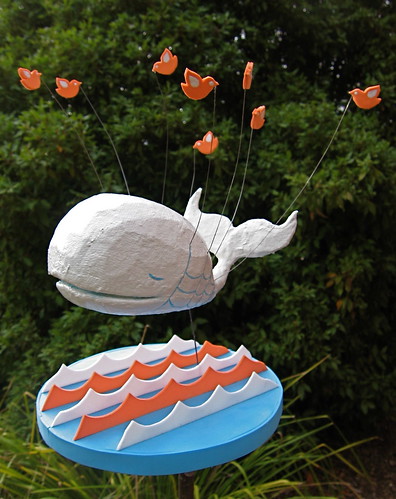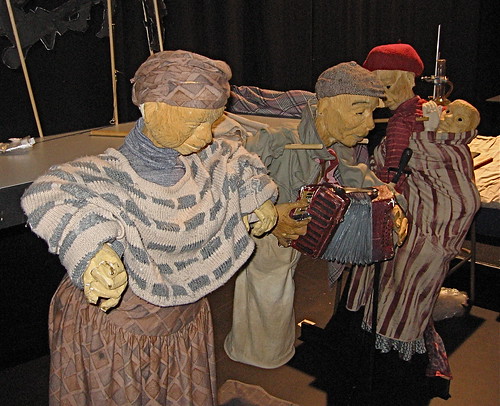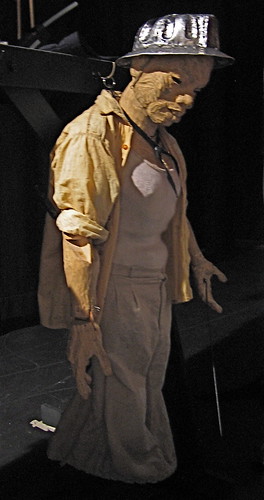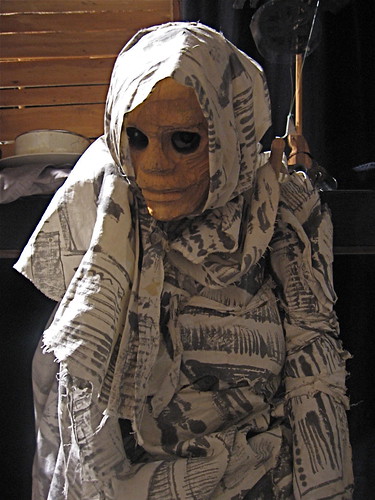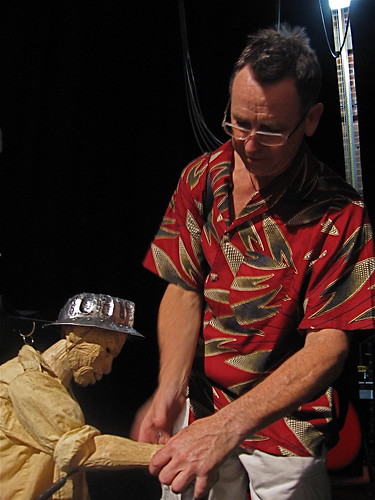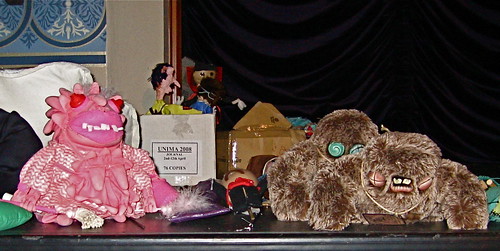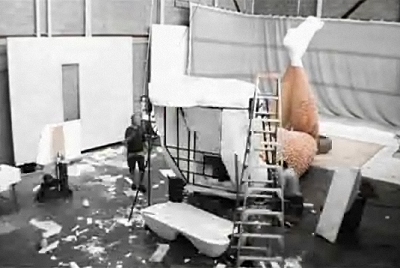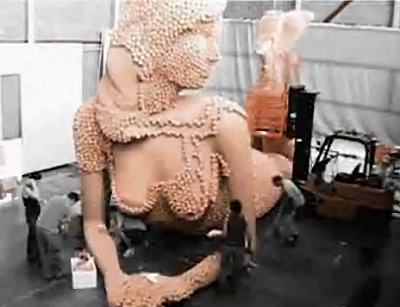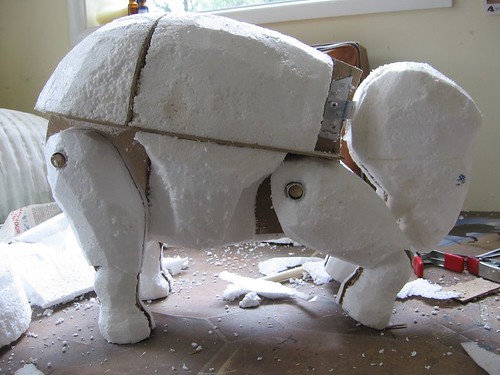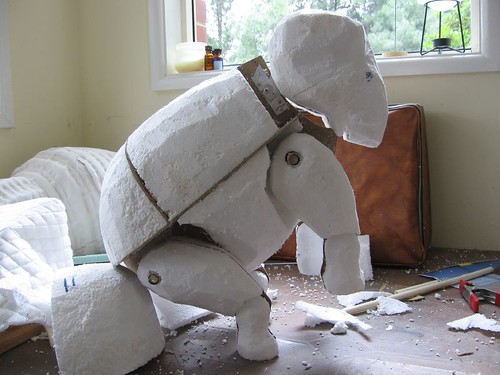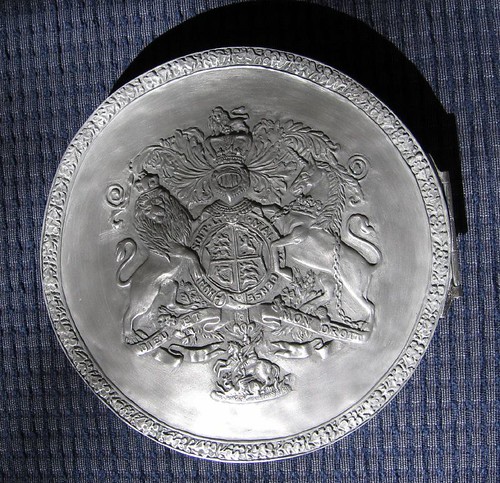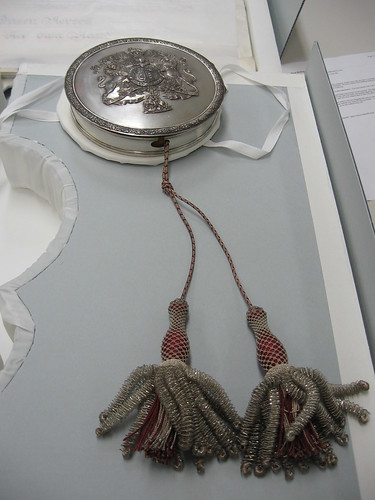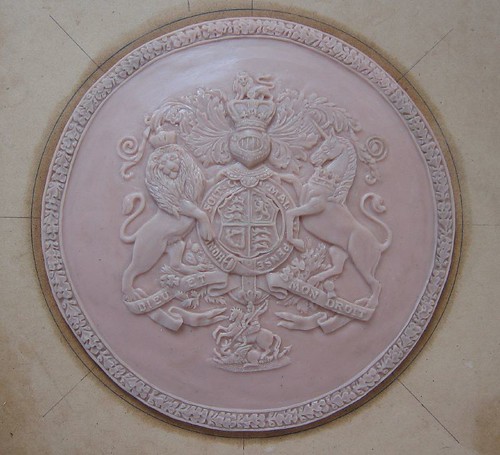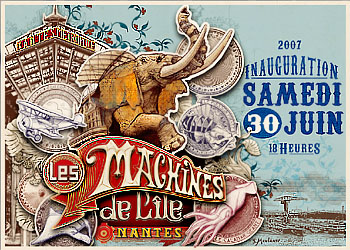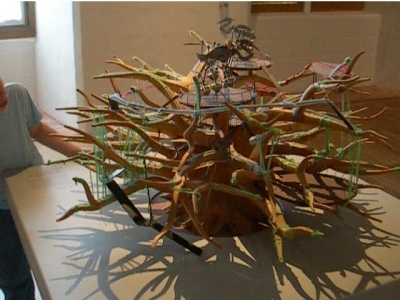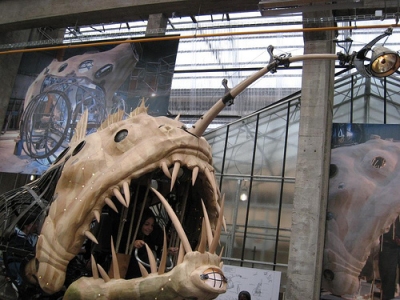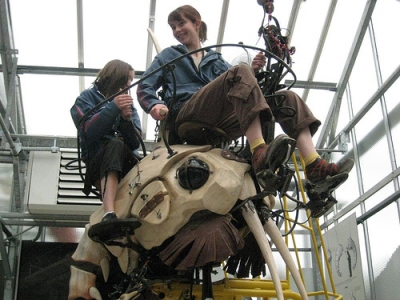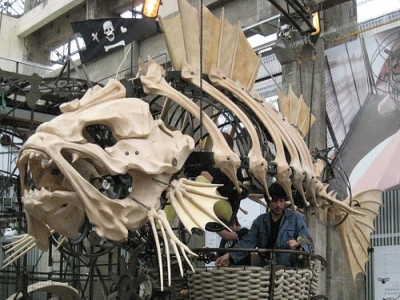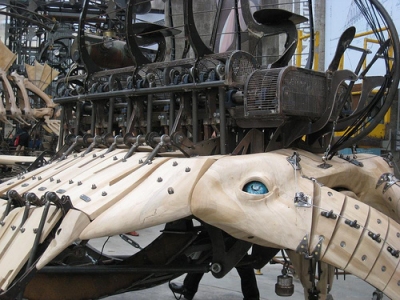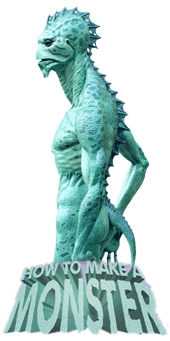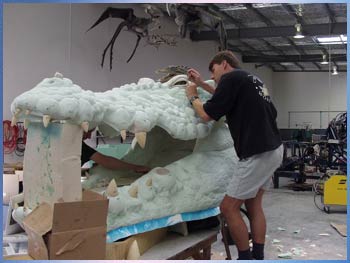My little kinetic sculpture of the lovely Twitter Fail Whale, based on the image by Yiying Lu that is used when twitter.com is over-capacity. The image is called ‘Lifting up a Dreamer’. I’ve wanted to make this since I first saw the image some weeks ago.
This is a short video of it in action, complete with twittering birds!
More photos here. (Update: fail whale widget here)
I remain optimistic and supportive of Twitter in the long term, because I think the real-time courier service rationale that was the founding impetus of the service constitutes a new branch off Doc Searls’ live web, and makes our online interactions a quantum step closer to Allen Searl’s original vision of ‘a Web where anybody could contact anybody else and ask or answer a question in real time’. Twitter’s track facility, presently down but still promised, provides the real-time search of people and and what they are talking about right now.
Maybe the progression of branching-off goes a little like this:
static web > live web > real time web
google > blogosphere > twittosphere
our property > our history in time > our real-time conversation
search by sending out bots> search by listening for pings > search by tracking people and words in real time
It may be that Twitter’s primacy will be usurped by some other real-time service that gets up ahead of them in the race; I hope not. But many great progressive ideas start off serendipitously or in fun without their full implications or potential being known, and in those circumstances it’s silly in hindsight to say the founders ought to have seen further, planned better and acted quicker than they did.
